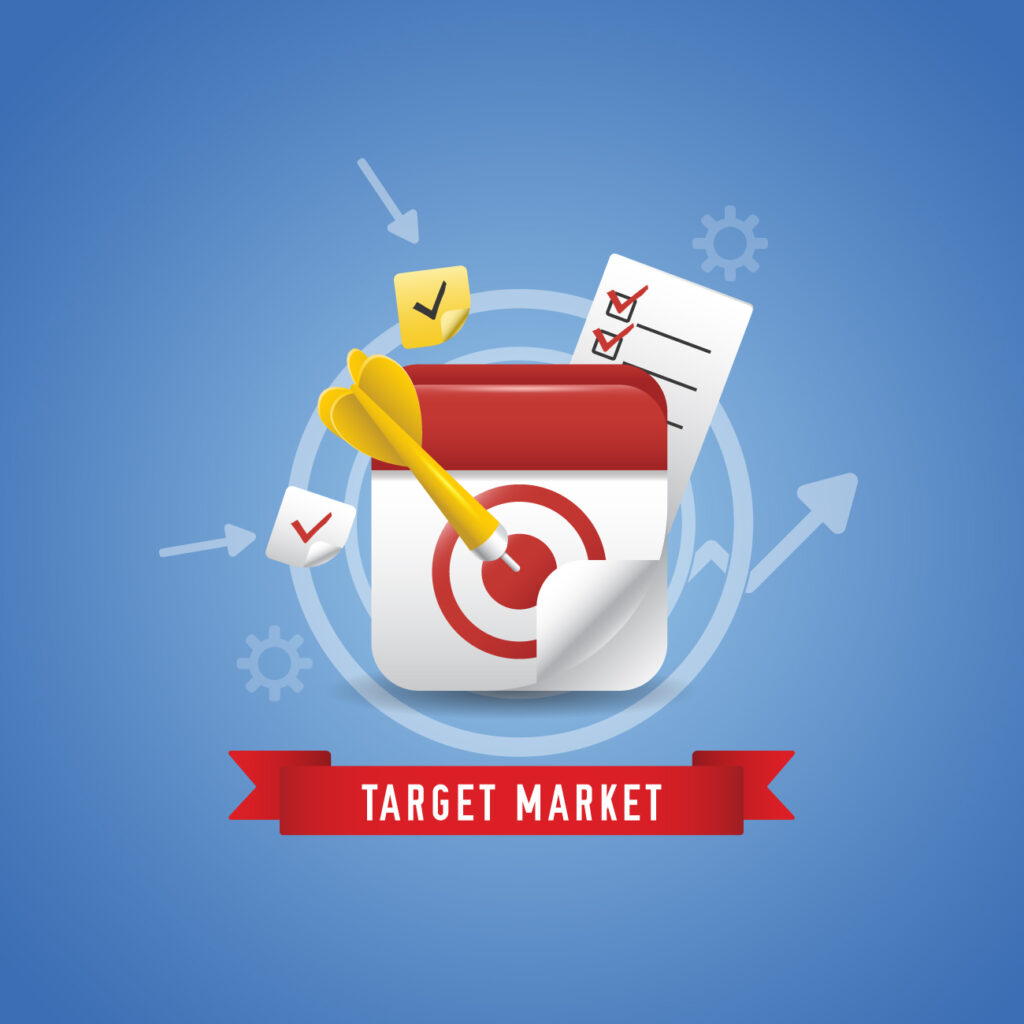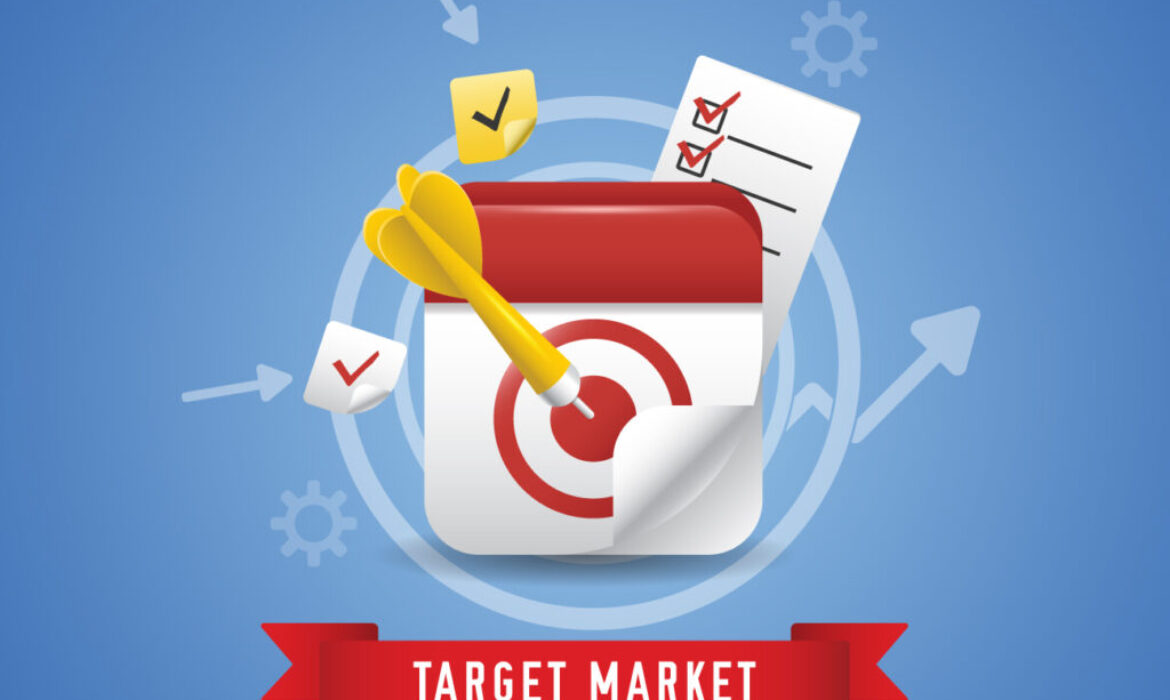081-4797-7173
How to Kickstart Digital Marketing for a Small Business with No Online Presence
Starting digital marketing for a small business with no online presence may seem daunting, but it’s a vital step toward growth and success in today’s market. By following the steps outlined in this article and considering Luemprex Digital as your trusted partner, you’ll be well on your way to establishing a powerful online presence and assured success.
In today’s competitive market, establishing a robust online presence is crucial for small businesses. Without an online presence, you’re missing out on countless potential customers who turn to the internet to find products and services. If your small business is just starting and lacks an online footprint, the task might seem daunting. However, fear not; we have a comprehensive roadmap to guide you through the process.
Understanding the Importance of Digital Marketing
In a world where the internet plays a central role in our lives, digital marketing is not just an option; it’s a necessity. Here are a few key reasons why it’s essential for your small business:
1. Increased Visibility: Digital marketing allows your business to be visible to a global audience 24/7, expanding your reach far beyond what traditional marketing can achieve.
2. Cost-Effective: Digital marketing is more cost-effective than traditional advertising methods, making it ideal for small businesses with limited budgets.
3. Targeted Marketing: With digital marketing, you can target specific demographics and reach the most likely interested in your products or services.
4. Measurable Results: You can track the performance of your digital marketing efforts in real-time, allowing you to make data-driven decisions and optimize your strategy.
Identifying Your Target Audience
Before diving into digital marketing, it’s crucial to identify your target audience. Understanding who your potential customers are will help you tailor your marketing efforts effectively. Consider factors such as age, location, interests, and online behavior. This information will guide your content and platform choices.
Creating a Stunning Website
Your website is your online storefront. It’s often the first point of contact between your business and potential customers. Here’s how to create an appealing and user-friendly website:
– Choose a user-friendly design and layout.
– Ensure your website is mobile-responsive.
– Provide clear and concise information about your products or services.
– Use high-quality images and engaging content.
Optimizing for Search Engines
Search engine optimization (SEO) is the process of improving your website’s visibility in search engine results. To optimize for search engines, consider the following:
– Research relevant keywords related to your business.
– Create high-quality, original content.
– Optimize on-page elements like titles and meta descriptions.
– Build high-quality backlinks to your website.
Leveraging Social Media
Social media platforms provide an excellent opportunity to engage with your audience and build your online presence. To get started:
– Choose the right social media platforms for your business based on your target audience.
– Create and share engaging content regularly.
– Interact with your followers and respond to comments and messages promptly.
Email Marketing Strategies
Email marketing is a cost-effective way to reach potential customers directly. Create engaging email campaigns by:
– Building a subscriber list.
– Crafting compelling subject lines.
– Providing valuable content in your emails.
– Personalizing your emails for better engagement.
Online Advertising
Paid advertising can give your online presence a significant boost. Consider options like Google Ads and social media advertising. Set a budget that aligns with your goals and monitor the performance of your ads.
Content Creation and Blogging
Content is at the heart of digital marketing. Create valuable content that promotes your products or services and provides useful information to your audience. Blogging is a powerful way to establish your authority in your industry and drive organic traffic to your website.
Monitoring and Analytics
To gauge the success of your digital marketing efforts, use tools like Google Analytics to track your website’s performance and the impact of your marketing campaigns. Analyze the data and make adjustments to optimize your strategy.
Luemprex Digital: Your All-in-One Digital Solution
For small businesses seeking to establish a strong online presence, Luemprex Digital offers comprehensive services spanning branding, logo design, social media management, email marketing, and more. With Luemprex Digital, you have every aspect of your digital marketing needs covered.
You can reach out to us via email, call or any of our social handles.
WHAT ARE THE 10 STEPS TO CREATING A DIGITAL MARKETING STRATEGY FOR BEGINERS?
In a world where digital interactions control almost everything, mastering the art of digital marketing is no longer an option-it’s a necessity. A well-crafted digital marketing strategy can be the difference between high business success and being lost in online noise.
So, Whether you’re an entrepreneur looking to boost your online presence or a business owner aiming for growth, A carefully planned digital marketing strategy is like your guide in the huge online world.
In this beginner’s guide, we’ll unveil the ten fundamental steps that will empower you to craft a digital marketing strategy that cuts through the clutter and leads your brand to success.
10 steps to creating a successful strategy as a beginner.
1. DEFINE YOUR BRAND
The first step of a successful digital marketing strategy begins with a clear definition of your brand. Your brand is your digital identity, and it must convey confidence, competence, and uniqueness. To define your brand effectively, you must intimately understand it from the inside out. Start by identifying your Unique Selling Proposition (USP).
This is the distinct quality or feature that sets your brand apart from the competition. Ask yourself, ‘What makes my brand different? What compelling reason will make my audience choose me over others?’ These answers will be the cornerstone of your brand’s identity.
In addition to your USP, defining your brand extends to articulating its mission and values. What is the core purpose behind your business? Why do you exist, and what drives your commitment to helping customers and solving their problems? By addressing these questions, you not only define your brand but also lay the groundwork for a digital marketing strategy that resonates with your audience on a deeper level.
For example, Samantha, a passionate chef, is the proud owner of a small restaurant in her town. Samantha’s values revolve around community and generosity. She’s committed to giving back to her neighborhood by providing meals for those in need. Every month, a portion of her restaurant’s earnings goes toward preparing and delivering hearty, nourishing meals to local homeless shelters. Samantha’s culinary talents serve as a value for her to make a positive impact, embodying the very essence of her brand and mission.
2. KNOW YOUR AUDIENCE
While having a thorough and deep understanding of your brand is essential, knowing precisely who you’re trying to reach and engage is equally important. The next step is to know your target audience, and you can do this by creating a buyer persona.
A buyer persona is a fictional non-existing customer that represents the set of people you’re trying to reach and sell to. They represent your ideal customers. To create a perfect persona you need to consider these key factors:
- Age
- Location
- Income
- Hobbies/interests
- Goals
- Job.
If you sell cosmetics for instance, your buyer persona can be a makeup artist in her late 20s, lives in the city, has a lot of customers works non-stop for a week, earns a healthy amount of money, loves to browse through the internet(especially Instagram) and cooks in her leisure time and whose goal is to use fantastic makeup products for her customers.
But how does this help create your digital marketing strategy? They’ll help you know how to create the best plan. Your buyer persona here loves to browse and loves to watch Instagram. This means one of your strategies can be social media marketing using Instagram as your main marketing platform.
3. SET YOUR GOALS:
Setting clear and well-defined goals is the guide your entire digital marketing journey needs. By defining your objectives, you give your strategy direction and purpose. The benefits of setting goals are numbers just to mention the few best.
Firstly, they provide a sense of focus. With concrete goals, you can avoid wandering in the digital world and wasting resources on tactics that might not yield results. Goals keep your efforts concentrated on what truly matters to your business.
Secondly, goals enhance measurement and accountability. When you have specific objectives in place, you can easily track your progress and assess whether your strategies are working. This measurement not only helps you optimize your efforts but also holds your team accountable for achieving the desired outcomes.
To create effective digital marketing goals, follow the SMART framework:
- Specific: Make your goals precise and unambiguous. Instead of a vague aim like ‘increase website traffic, specify and narrow it down to something like ‘increase organic website traffic by 20% in the next six months.’
- Measurable: Define how you will measure success. Use metrics like website visits, conversion rates, click-through rates, or social media engagement to track progress.
- Achievable: Ensure your goals are realistic and attainable within your resources and time frame. Ambitious but feasible goals motivate progress.
- Relevant: Align your goals with your overall business objectives. They should contribute directly to your company’s growth and success.
- Time-bound: Set a clear deadline for achieving your goals. A timeframe adds urgency and helps you prioritize tasks.
4. SET A BUDGET:
Your budget should align with your goals and the strategies you’ve outlined. It ensures that you have the necessary funds to execute your chosen digital marketing methods effectively, whether that involves running ads, creating content, or hiring experts. By establishing a clear budget, you gain control over your campaign’s finances and minimize the risk of overspending. It’s your financial compass to keep your digital marketing efforts in sync with your overall plan.
5. CONDUCT MARKET RESEARCH:
Once you’ve identified your target audience and established your goals, diving into thorough market research is the next step. This phase involves gathering essential insights to inform your digital marketing strategy. In your market research, focus on several key aspects, with the first being your competitors. Understand who your competitors are, and delve into their strengths and weaknesses. Examine the strategies they employ to market their businesses.
Additionally, pay attention to their messaging language and promotional styles. Analyzing how your competitors communicate with their audiences can help you identify gaps or opportunities to differentiate your brand effectively. Effective market research empowers you with the knowledge needed to make informed decisions.
6. CHOOSE THE RIGHT DIGITAL CHANNELS:
Crafting an effective digital marketing plan stems from selecting the appropriate digital marketing channels. With a clear understanding of your target audience and defined goals, the next step is to determine the channels that will best connect you with your audience. Selecting the right channels involves considering factors such as the nature of your business, and your audience’s online behavior. These choices include a wide range of options including social media platforms, email marketing, content marketing, search engine optimization (SEO), pay-per-click advertising (PPC), and more.
7. CRAFT ENGAGING CONTENT:
The next step is to prepare for and start creating content that captivates your audience and draws them closer to your business. This content should be like a magnet, pulling people into your business. Your content should aim to provide value, whether through solving problems, sharing insights, or entertaining. The goal is to establish your brand as a trusted source and build a connection with your audience. Remember, creating content is not a one-size-fits-all, It can take various forms, such as blog posts, videos, social media updates, or infographics. The key is to make this content interesting, informative, and relevant to your audience’s needs and interests.
8. DEVELOP A CONTENT CALENDAR:
A marketing calendar serves two essential purposes—it keeps your business content organized and helps you stay on top of your plans. It’s like your scheduling assistant. With a marketing calendar in place, you’ll have a clear timeline for all your marketing activities. This means you can easily track your progress, measure how much you’re getting done, and see if your efforts are getting noticed by your audience. In simple terms, a marketing calendar keeps you organized and productive, ensuring that you stay on the right path in your digital marketing journey.
9. IMPLEMENT AND MONITOR:
This is the phase where you roll up your sleeves and get to work. Start by implementing everything you’ve learned from this article. You put your plan into practice, step by step, and then watch closely to see how it all works for you. As you implement your plan, keep an eye on how each step works. Monitor the results and make note of what’s working well and what might need adjustments. This monitoring ensures that you can fine-tune your approach and make improvements as needed.
10. ANALYZE AND ADJUST:
After implementing your digital marketing strategy, it’s crucial to regularly review and analyze its performance. This involves examining key performance indicators (KPIs) such as website traffic, conversion rates, engagement metrics, and sales.
Conclusion
In the world of digital marketing, a good plan is your guide to success. These ten steps, explained simply, will help beginners like you navigate this digital world. From understanding your brand and audience to setting goals and adjusting, it’s all about learning and growing. Keep listening to your audience and adapting. In short, an intelligent strategy leads to success in the online world
5 Interesting health benefits of Eggs
Oh! The varieties that comes with making eggs. We can have them as either fried, baked, scrambled, boiled, or poached. They are also key to special proteinous healthy breakfast recipes too – and how they all do taste egg-cellent!
A good number of us are very much aware of the importance of eggs as it is a good source of protein(both whites/yolk) to the human body. Eggs has pretty much been categorized from our basic knowledge as one of the proteinous food available with each egg containing about six grams of protein, as well as good amount of amino acids.
Getting a good share of protein each day can help with varieties of things in the body as regards to weight management, increase in body mass, lowering of blood pressure and as well as help with our bones! But do we know that there are other incredible health benefits that comes with our daily intake of eggs? Do we? Okay lets talk about 5 other interesting health benefits of eggs.
Eggs contains Choline:
This is a not too known nutrients but choline is essential for brain health. Choline is what we would consider in the scientific world as a micro-nutrient that is used to build cell membranes, and also aids in the proper functioning of the nervous system. According to the National institute of health, Choline as a micro-nutrient is present in eggs at 27% in a fully boiled egg. It is also helpful for pregnant women and babies.
Eggs contain anti-oxidants:
Studies have shown that eggs contain the anti-oxidant lutein and zeaxanthin. These are powerful antioxidant that accumulates in the retina and has been linked to its use to reduce the risk of age related eye disorders like cataract and macular degeneration, though more research is still needed to be conducted to fully confirm these findings.
Eggs contain vitamin-D:
Eggs is a good source of vitamin D. Vitamin D aids not only in boosting the immune system but also plays a huge role in keeping the bones strong. Eggs are also rich in calcium and folate and if we are being honest, a bit of everything the body needs to remain healthy, and also low in calories.
Eggs are a rich source of HDL(high-density cholesterol):
HDL is a type of cholesterol as we also have LDL. But contrary to prior belief, eggs are a rich source of HDL and individuals with higher level of HDL are at reduced risk of heart disease. But just like with all things, moderacy is advised. This is no reason to go overboard with intake.
Eggs are a rich source of Biotin:
These are the B vitamins that are essential for enhanced skin texture and also improved hair growth. oh! the amazing health diversity that egg encompasses!
To satisfy 3 hundred Greeting Added bonus Local casino 2024
Content
Their mission would be to make sure our group can also be “Fool around with A lot more”. Below are a few the then self-help guide to come across which casinos explore sweeps gold Golden Lounge casino real money coins and the professionals this will render. There are a number of super the newest sweeps casinos found in the us, the our very own preferred are Wow Las vegas, Pulsz Casino, and Risk.Us Casino. (more…)
How can I find mentors and industry professionals to connect with?

About 2,800 years ago, Greek poet, Homer wrote an epic poem which he titled, “The Odyssey“. It was a story about the travails of a man named Odysseus, who journeyed to his homeland, Ithaca after the Trojan War. The journey wasn’t exactly smooth as he faced several obstacles which included encounters with mythical creatures, gods, and various trials. On getting home, he also found his kingdom already overrun by strangers. In the story, the goddess of wisdom, Athena, assumed the form of a character named, Mentor, and with her help, Odysseus was able to triumph over his challenges and reclaim Ithaca alongside his son, Telemachus. 2800 years later, this story still remains relevant as it underscores the importance of proper guidance. It is also responsible for the term, mentor, being used to describe a person who offers guidance to another, in the present day.
Mentorship has been proven to be very important for a person looking to have a good career. A five-year study of 1000 employees was published in 2006. In this study, they tracked employees who participated in a mentoring program and those who didn’t and found out among other things that those who had mentors were promoted five times more often than their counterparts. Another study shows that compared to colleagues who did not mentor, individuals who served as mentors within their workplace reported greater job satisfaction and commitment to the organization. The results of these studies are not surprising as quite a number of people have witnessed and enjoyed the benefits of connecting or getting advice from someone who is a professional at what they do.
In a world where we are more connected than we were thirty years ago, where distance is not a barrier to communication, the question remains, how does one find a mentor or connect with an industry professional? Below are a few ways you can do so:
1. Social media: From connecting us to long-lost friends, enabling us to engage in online banter, recommending posts and videos that keep us entertained or informed, allowing us to make friends of strangers to serving as a platform through which certain goods and services can be bought or sold, social media has, and continues to play an integral role in our lives. According to Wikipedia, there are more than 30 social media platforms with at least 100 million active users. This number comprises different people from different parts of the world communicating and connecting with each other irrespective of distance. If you’re looking to find a mentor or an industry professional to connect with, getting active on different social media is something you should consider. Social media allows you to directly message people, make posts, interact with posts, join online communities, etc.
One way to find mentors or industry professionals is to first determine what industry or niche you would like to find them in. Clarity on what niche/industry you’d like to find a mentor in is very important as it lets you know what exactly to search for. For example, if you are a person who has dabbled in online businesses for a short while and desires to connect with someone who is a professional in the industry. It is important for you first to determine what exact niche/industry you’re looking to get mentorship on. There are several internet businesses like drop-shipping, affiliate marketing, blogging, etc. Your decision to choose a niche will in turn inform your search queries. Social media possess powerful search algorithms that you can take advantage of. A simple search on what niche you decided upon will grant you access to different content made by people who are knowledgeable in the space. You can then filter out who you would like to connect with or get mentored by.
2. The Internet: You might wonder why the Internet was included in the list after social media was already mentioned. It’s that way because, a lot of times, people confuse social media with the internet when they’re, in fact, very different from each other. Social media are subsets of the internet. They comprise a few of the millions of platforms or websites on the internet.
As someone searching for mentorship or a professional in a particular industry, you can use the internet by following up with articles or blog posts written about topics in your industry of choice. These articles or blog posts will most likely be written by someone knowledgeable or professional and might also contain the contact information of the writer. You can then reach out to them, build a relationship with them, or politely ask them for help in your career path.
3. Physical and virtual events relating to your industry: Another thing you should do to connect with professionals in your industry is to ensure you attend industry-related physical and virtual events. A simple Google search or social media search of events relating to your niche will most likely be fruitful as most events tend to do a lot of publicity to ensure maximum attendance.
4. Social gatherings: Social gatherings like churches, mosques, parties, etc. sometimes contain people who are professionals in your field of choice or people who know those who are. So, it’s best you endeavor to put on a pleasant demeanor at social gatherings and be vocal about what you do.
While this is not an exhaustive list of how to get access to a mentor or an industry professional, it can serve as a good start. Having access to a mentor is something to strive towards if you are looking to advance in your career choice.
WHAT TYPE OF DIGITAL ADS ARE MOST EFFECTIVE?
Starting or expanding a business can be confusing regarding how to manage and handle the advertising and marketing part.
It’s frustrating not knowing the right way, platform, or rules to follow. The struggle is real.
Firstly, You should understand that whatever advertising approach you choose has the potential to boost your brand, but you need to ask yourself these questions before making any decisions.
What are the goals you have for your business? What is your budget? How well do you know your audience? Are your audience on a local level or global level? Do you know the fastest way of reaching your target audience and how to market to them?
These and many more are the list of questions you should tick off your checklist before you dive into digital advertising.
Secondly, you should know that the most effective form of advertising is still word of mouth.
Decades ago, business owners relied on word of mouth for growth. But In today’s fast-paced world, social media and technology offer a powerful alternative.
Technology and advertising have become very powerful tools making it easier for businesses to harness the potential of platforms like social media to connect with customers and boost sales.
But before you take any step or give a whole lot of your money to advertising companies or marketing agencies, this article is going to help and give you the basic knowledge you need to understand what type of digital ads are most effective for your business.
If you’re running a small business and your audience is on a local level these digital ads are most effective for you
- Social Media Advertising: Building an online presence on Platforms like Facebook, Instagram, and Twitter offers highly targeted advertising options, allowing small businesses to reach specific demographics, including people nearest to you and interested in your services. Carousel ads, video ads, and sponsored posts are also effective for small businesses.
- Search Engine Advertising (Google Ads): These ads appear at the top of search engine results pages when users search for relevant keywords. Take for instance you sell cosmetics, you can research what products your customers buy the most, making them available for potential customers actively seeking your products or services.
- Display Advertising: These visual ads appear on websites within ad networks. They can be in the form of banners, videos, or interactive content. Remarketing campaigns, in particular, can be effective for re-engaging with website visitors.
- Email Marketing: Email marketing is a highly effective digital advertising strategy for small businesses. Email campaigns, including newsletters and promotional emails, are a cost-effective way to build relationships with new customers and reach existing customers to nurture leads. This also allows for continuous improvement and optimization, making email marketing an invaluable tool for building brand loyalty and driving sales among a dedicated audience.
- Local SEO and Google My Business: Optimizing your online presence for local search is crucial for small businesses. Ensuring your business is listed on Google My Business and managing online reviews can help you stand out in local search results.
These are just a few examples, the effectiveness of each can vary depending on your target audience and industry. It’s essential to measure the performance of your digital ads to determine which ones work best for your specific business.
Also, if you’re running a business on a global scale and you’re looking for the most effective digital ads to go for, check this out;
- Video Ads on YouTube: With over 2 billion logged-in monthly users, YouTube offers a vast audience for video advertising. It’s particularly effective for brand awareness and storytelling. You can have a large number of subscribers that are in your content.
- LinkedIn Advertising: LinkedIn is a powerful platform for B2B advertising. Sponsored content, sponsored InMail and display ads can help businesses reach professionals and decision-makers worldwide.
- Influencer Marketing: Partnering with global influencers in your niche can help your brand reach a broad and engaged audience. Platforms like Instagram and TikTok are popular for influencer campaigns.
- Interactive Content Ads: Engaging content like quizzes, polls, and interactive videos can capture users’ attention and encourage them to interact with your brand on a global level.
- Content Marketing: Creating high-quality, informative content that addresses global industry trends and challenges can attract a global audience and establish your brand as an authority.
In conclusion, keep in mind that it’s effective advertising that makes people remember your brand name. Choosing the most effective type of advertising can be confusing, but it can be a lot easier if you partner with the right company.
At Luemprex Digital Network, we help businesses like yours achieve their goals and grow their business. With your budget, we can create an advertising plan that aligns with your business goals. Contact us today to discuss how we can work together to make your dream business come to life.
HOW TO START BUSINESS AS A WOMAN
History class informed us of the partition called gender roles of earlier days. Men hunted and grew crops while women were saddled with the responsibility of taking care of the home front and making it a place of comfort.
But as the population skyrocketed, the need for economic expansion rose as the sources of livelihood were limited. That birthed the Industrial Revolution, starting with the mining of coal. As wheels turned and machines whirred endlessly, a large workforce was employed to bear labour’s burden.
Putting it succinctly, women thus had to step beyond the confines of their homes shielded in traditional restrictions, to work and earn alongside the male folks in a bid to survive.
From industries to school to business, women have transited and now in the 21st century have worked through loops to destroy the stereotype of women being the weaker vessels.
Many women out of fear have remained relegated to the background, fading away without putting their strength to profitable business. This article brings to light how the fairer sex can venture into the economic folds of legal business and triumph even in the face of the sect’s challenges.
BUSINESS MODEL: IBUKUN AWOSIKA

Only an average Nigerian lady, she sought to launch her own business when she found herself restless and hating the usual pattern of working from one company to another without fulfillment. After her compulsory one year National Youth Service Corps (NYSC) service, seeking independence and expression, she established a furniture making company called Quebees Limited.
Having no prior business experience, she was denied loans by banks. She also faced the problem of inadequate machinery to meet the needs of clients. It is justifiable to say newbies in the field of business will face similar issues engendered by lack of capital. It could get frustrating until solutions are gotten.
Here, for the wonderful you, is the perfect guide to start your own business with few hitches:
FIND YOUR BUSINESS IDEA
Do you lack the innovative ideas to bring your entrepreneurial desires to fruition? Worry not. The following are simple hacks to it:
- Consider problems in your environment and solve them. Is it simple? Most certainly. Do you live in a place where the residents go a long way off to get groceries? Begin to sell them, even in your home. You can sell cold water packaged in bottles or satchets for residents living in heat-ridden communities that lack electricity (supposing you have a generator and freezer). There is always a need in communities which serves as a window of business opportunities.
- Ask your friends and family. Two heads, they say, are better than one. In this scenario, you get different perspectives from your folks on what business you would excel in. Listen to their commendations, criticisms as constructive as they come and filter out the unsavoury comments aimed at discouraging your positive progress.
- Build on your hobbies. People who enjoy writing, sports, etc. earn a lot from them. Whatever fun activities you have a knack for can be a money-pot for you. Those who enjoy churning words do freelance. Good cooks now cook and sell to customers. Persons who dance for fun have now monetized it via holding dance classes. Begin where you can.
- Create substitutes to existing products. Unilever’s largest detergent brand, OMO, has lived through the years alongside So Klin, Ariel and Elephant detergents, each pulling market favours of their customers. Business is drenched in competition. As the world grows and product preferences change, consumers will make space for each product of quality standard and relative affordability. Create your own products and meet needs.
DO YOUR MARKET RESEARCH
Market research is an enquiry for detailed information about customers. It is a hunt for honest answers as to market value, profitability of the market, estimated cost prices and sales, demographics of your target customers, their purchase behaviour, the brands they patronize and why, competitors, market trends and marketing means that attract sales.
No business newbie should ignorantly venture into a jungle of customers who make purchase decisions on their own based on your product and market positioning. You must learn how to tilt market favours to your brand.
Do these, newbie:
- Delineate your buyers. The marketplace is L-A-R-G-E and that in itself is daunting. Hence, you must know your buyers through and through i.e. their demographics as in age, gender, location, income, family size, etc. This is to ensure you have a targeted audience for your research.
- Choose the buyers to review. (Define a sample size) A sample size is advised to be derived from a vase population of prospective customers. The sample size… Criteria should be set for sampling.
- Prepare target questions and engage your participants. Do not probe with a plethora of questions without hitting the ball home. Target them at the needs and inclinations. You can engage them via social media survey or paid online survey via Google and other wide-reaching platforms. And it is A GOAL!
- Learn your competitors. What are their strengths? How weak are they and in what areas? What opportunities have they explored and profited maximally from? Note them down as reference points.
- Evaluate your findings. You would find important answers to your questions. Use the SWOT analysis method to probe into the Strengths, Weaknesses, Opportunities and Threats of your proposed business enterprise.
DEVELOP A BUSINESS PLAN
A business plan includes the goals of your business and how to achieve them. It is an entrepreneur’s road map. How do you do this?
- State your goals encompassing your projections and what you seek to achieve.
- Determine your means of funding. Will you apply for loans or use up your savings?
- Note the costs of your products and services.
- Create a marketing plan. Until you make it known, no one will patronize you.
LEGAL CONCERN
Register your business! There can never be an overemphasis on this point. National laws protect manufacturers and innovators via copyrights, patents, trademarks and registered designs. Until you’re recognized as original owners of your work (s) or products, the right to manufacture them can be stolen from you.
FINANCIAL CONCERN
Create a budget to understand how much capital is needed for a short or long term shot. It helps an estimation of labour to employ per time. Possible revenue, fixed costs and profit are predicted.
GO GLOBAL
Marshall McLuhan, the Canadian theorist, has described the world as a global village. Earth in its large expanse has been made a small place by technological innovations like Google, Facebook, X (formerly called Twitter) and Instagram, among others. Vendors now run advert campaigns and sell their products to buyers all over the world, beating down the force of physical distance. Leverage this.
I am concluding…
Ibukun Awosika has risen to be on a number of corporate and non-profit boards which include First Bank of Nigeria Limited, Cadbury Nigeria Plc, Convention on Business Integrity (CBI) and the Nigerian Sovereign Investment Authority. She chairs the boards of First Bank of Nigeria Limited and Afterschool Graduate Development Centre (AGDC), a platform for addressing employability of youth and entrepreneurial issues in Nigeria. She is just one of the millions of Earth’s women with success stories in business.
The World Economic Forum predicted that in 2023, a new form of entrepreneurship that is “more diverse, more socially-minded and not afraid to multi-hustle” will emerge. Take advantage of new breaks in trade.
Owning a business means you are your own boss and allows you freedom to search all bounds of business innovations and adjustments. Earn and live the love you’ve always dreamed of.
Take that first step today!
Cheers to starting and finishing strong!
What Should Be Included in a Comprehensive Business Plan?
Crafting a comprehensive business plan is the key first step for any venture, as it transforms a mere business idea into a tangible reality. Furthermore, it provides invaluable insights into the strategies required to achieve your business’s objectives. Importantly, business plans are not just vital for startups; even established companies can reap significant benefits by revisiting and revamping their business plans to ensure they align with their existing goals and strategies.
The Benefits of Having a Business Plan:
1. Defining Goals and Objectives: A well-structured business plan helps define your business’s goals and objectives.
2. Strategic Development: It serves as a strategic roadmap, guiding you in developing a clear path to reach your business goals.
3. Risk Mitigation: A comprehensive plan allows you to identify and mitigate potential risks, safeguarding your business’s future.
4. Investor Attraction: Additionally, it serves as a powerful tool for attracting potential investors or lenders, making it easier to secure the necessary funds.
What Is a Business Plan?
A business plan is a formal, written document that outlines your business’s objectives, goals, finances, and management team. It not only guides you in operating your business effectively but also plays a crucial role in attracting investors to finance your startup or support your business’s next growth stage. When crafted effectively, a business plan doesn’t just track progress; it serves as a dynamic roadmap for achieving your defined goals.
Key Elements of a Comprehensive Business Plan:
While there’s no one-size-fits-all formula for creating a business plan, several essential elements should be included to make your plan stand out. Here’s what you should consider:
1. Executive Summary: Your executive summary is your chance to make a powerful impression on potential investors and lenders. It should be detailed and engaging, covering key aspects such as your business concept, financial and stakeholder goals, unique products and services, target audience, marketing strategies, sales projections, funding requirements, and the expertise of your management team.
2. Business Overview: Provide a concise history of your business, describe the products or services you offer, outline the problem your business addresses, and detail your strategies for solving it. Specify your business’s structure (e.g., sole proprietorship, limited partnership, or corporation) and explain your business model (e.g., direct-to-customer sales) to help investors visualize your sales operations.
3. Business Goals and Vision: Clearly articulate your business’s mission, vision, and value proposition. Some businesses aim to achieve more than just financial gains; they may seek to address community issues or create employment opportunities. If your business requires funding, explain why and how investors will benefit.
4. Organization and Management: Every business needs a capable management team to achieve its objectives. In this section, emphasize your management team’s experience, skills, and talents, highlighting their contributions to your business’s growth. Mention whether you plan to hire additional talent to achieve your objectives.
5. Products and Services: Success hinges on offering products or services that address people’s problems. Define the unique features of what you offer and explain your strategy for differentiating yourself from competitors.
6. Marketing Analysis: Investors and lenders are keen to understand your business’s growth potential and its expected return. Present a SWOT analysis (Strengths, Weaknesses, Opportunities, and Threats) to provide valuable insights into your business’s potential for growth.
7. Marketing Strategy: Elaborate on how you intend to reach your global target audience. Discuss various marketing channels, including traditional methods like TV, radio promotion, paid online search advertising, print advertising, or email campaigns. Justify your chosen marketing methods and explain how they align with your business goals.
8. Financial Analysis: Whether your business is new or established, a financial plan is essential. Demonstrating a deep understanding of your business’s finances is crucial for investors and lenders. Include income statements, net cash inflows, balance sheets, and profit and loss accounts. Provide a comprehensive financial analysis projecting revenue, expenses, taxes, and sales forecasts.
9. Funding Request: If your business requires funding, clearly state the required amount and outline how you intend to allocate it for business growth. Specify the amount you aim to raise, explain your methodology for determining this figure, detail the expected return on investment (ROI) for potential investors, and mention your personal investment commitment to the business.
10. Appendices and Support: Include any additional documents that provide a deeper understanding of your business’s potential. This may encompass intellectual property, professional certifications and licenses, deeds, and other relevant materials.
Crafting a business plan that captivates investors can be challenging, but you need not worry. The Luemprex Digital team is here to guide you through the process. We specialize in creating comprehensive business plans that not only elevate your business but also entice foreign investors to join your journey. Reach out to us today to learn more about how we can help you get started.
HOW DOES DIGITAL MARKETING WORK FOR STARTUPS?
The world has over decades gone from its segmented limited spaces to a digital world. The distance dividing occupants of the world has been bridged by the digital age. And businesses have grown in exchange of goods and services.
For startups who are newly venturing into their various markets, distance and visibility have been major challenges, leading to failure at the early stage and accounted loss of profits and startup resources. But, digitalization has come to their rescue in the form of Digital Marketing.
According to a 2019 World Economic Forum report, only 8% of African startups make it to the Series B stage of funding. And BusinessDay newspaper says the rate of startup failure in Nigeria is at 61.07%, the highest among the top three investment targets in Africa.
To give credibility to the idea of digital marketing, Mint, owned by Neil Patel, is a testament of the prowess of digital marketing. Despite being relatively lesser-known compared to its well-established predecessors, the company dedicated itself to a digital strategy, producing numerous top-tier content pieces.
These encompassed informative blog posts as well as viral and captivating info-graphics, all aimed at propelling their business growth. As a result of Mint’s digital marketing efforts, the tool gained a massive online following before being sold to Intuit for a whopping $170 million.
In this article, you will learn digital marketing and how it works to help startups create a place in their various business sects.
WHAT IS DIGITAL MARKETING?
Digital marketing refers to the use of digital channels, platforms, and technologies to promote products, services, or brands to a target audience. It encompasses a wide range of online strategies and tactics aimed at reaching and engaging potential customers through various digital mediums.
The goal of digital marketing is to connect with the right audience, build brand awareness, drive website traffic, generate leads, and ultimately convert those leads into customers.
HOW DOES DIGITAL MARKTING WORK?
Below is a rundown of some components of digital marketing also known as digital strategies, and how to implement them for your startup:
Search Engine Optimization (SEO):
In simple terms, SEO means the process of improving your website to increase its visibility in Google, Microsoft Bing, and other search engines whenever people search for products you sell and services you provide.
Organic search which delivers 53% of all website traffic is a major reason why the global SEO industry is forecast by Research and Markets to reach a staggering $122.11 billion by 2028.
You can effectively implement SEO by:
1. Conducting keyword research to identify relevant search terms.
2. Optimizing on-page elements (titles, Meta descriptions, headers) with keywords.
3. Creating high-quality, valuable, and shareable content.
4. Building high-quality back-links from reputable websites.
Content Marketing:
Entrepreneurs in a bid to advertise create content to attract, engage, and retain an audience by sharing articles and videos related to their products. Content marketing examples include media like newsletters, blog articles, social media posts, and videos.
All of these contents intend to provide useful and relevant information that attracts them to a brand.
You can effectively implement Content Marketing by:
1. Identifying your target audience and their needs.
2. Creating a content calendar with a mix of blog posts, videos, etc.
3. Promoting your content through social media, email newsletters, and relevant online communities.
4. Using storytelling and visuals to make your content compelling.
Social Media Marketing:
This form of internet marketing uses social media apps as a marketing tool. These social media platforms such as Facebook, Twitter, LinkedIn, Instagram and WhatsApp enable brands to connect with their audience to build a brand, increase sales, and drive traffic to a website.
You can effectively implement Social Media Marketing by:
1. Choosing the right platforms based on your audience’s preferences.
2. Developing a content plan with original content.
3. Engaging with your audience by responding to comments and messages.
4. Using paid social media advertising to target specific demographics.
Pay-Per-Click Advertising (PPC):
Do you know? Advertisers can pay each time a user clicks on their online ads in this form of online advertising. That is what pay-per-click advertising is. It comes in different forms, one of which is the paid search ad.
These ads appear when people search for things to buy online using a search engine like Google.
You can effectively implement Pay-Per-Click Advertising by:
1. Defining your campaign goals and target audience.
2. Choosing relevant keywords for search ads or demographic targeting for social ads.
3. Creating compelling ad copy and visuals.
4. Setting a budget and bid strategy, and continuously monitor and optimize your campaigns.
Email Marketing:
This form of marketing uses emails to make your customers aware of your new products, services, and promos. Business owners send promotional emails and updates to a massive email list.
Litmus avers that email generates $36 for every $1 spent, meaning email marketing ROI is 3600% and 18% of companies achieve email marketing ROI greater than $70 per $1 invested.
You can effectively implement Email Marketing by:
1. Building and segmenting your email list based on subscriber preferences.
2. Creating personalized and engaging email content.
3. Using attention-grabbing subject lines.
4. Testing different sending times and frequency.
Influencer Marketing:
Have you seen online influencers? They are people who have a significant online following. Business owners leverage this form of marketing to promote products and services.
With the increasing use of the internet and in a bid to avoid hassles that characterize buying from distant places, people in Nigeria are embracing online shopping which includes delivery to their various locations.
You can effectively implement Influencer Marketing by:
1. Identifying influencers relevant to your industry or niche.
2. Building relationships with influencers and establish collaboration terms.
3. Developing a campaign that aligns with both your brand and the influencer’s style.
4. Monitoring and measuring the results of the influencer campaign.
The experiences of startups can vary widely based on factors such as industry trends, market conditions, government policies, and product uniqueness. While the journey can be daunting, the ability to innovate, adapt, and persist often contributes to their success.
Are you an owner of a startup which has a growth potential but has limited resources and are seeking to dominate market you’ve ventured into or build an online presence?
It is imperative to leverage the innovation of Digital Marketing to scale business hoops, beat risks and uncertainties in the litheness of the entrepreneurial spirit, especially in this 21st Century.
HOW TO IDENTIFY A TARGET MARKET FOR START UP?

Knowing the concept of ‘Target Market’ would help you secure your business better as one who is just coming on board. Note that, not all customers are not your customers. Not everyone is your potential buyer. This article will highlight how to know and secure your ideal customers.
What does Target Market mean?
Target Market is your potential buyer you identify to sell your goods and services to. In a short form, they are actually people your goods and services are created, suited and marketed to.
Your target market can be customers, Industries or Resellers.
Why have a Target Market?
You should have a Target Market for these reasons
-You are just starting up and you don’t really know your potential customers yet
– it’s a more effective and affordable way to reach your customers and generate business revenue better.
– it’s allows you create products and services that meet specific needs of customers
– You can easily track your progress and know whether you are meeting your goals or not.
– It’s allows you to study customer’s nature and how they interact with your product and services
– it allows you to channel your marketing to motivate them to buy your products and services.
Sources have it that:
-40% of startups fail because they have no target market for their offer/service.
-20% of startups failed because they ran out of cash (they were targeting all customers).
You now could see reason why you should have a target Market for your business
How to identify your Target Market
Research your Market:
Statistical data from research helps you understand your potential customers better, you get to know their basic needs and how you can better implement your marketing decision to meet their needs.
Compile data on your current customers:
Data from those in contact with your product and services helps you understand your potential customers better.
Segment your Market:
This involves grouping your different buyers with similar preference and buying habits into a more concise group. This allows you to define your ideal customers for each segment/group and how to market best to them. Take for instance, an athletic shoe industry is broken up into several segmented groups – first by gender, then by the activity or sport. This allows the athletic industry to market better to those who fall under the Gender category and those who fall under the Sport category.
Define your Target customers:
To define your target customers you need the following informations about your customers:
–Gender: Even though both genders want your products and services, one Gender will surely outpace the other as your target audience.
–Age: Age allows you factor in age limit that would patronize you best
–Location and time zones: where do your customers stay and their different time zones allows you position your customer services and representative online at when due and when to push out ads for best visibility
–Spending capacity: how well your customers can spend allows you to position your pricing category strategically.
–Interest: Aside from your products and services, what other things your customers are easily drawn to or what are they easily connected to. How can you leverage on their interest and satisfy them
–Challenges: what problems or pain points are your customers facing? How will your product and services help alleviate those burdens and pain off their shoulders?
–Geographics: their climate and seasons, cultural preference
–Psychographics: their hobbies, life goals, values.
–Income: How much your customers earn also helps you position your product and services better as well.
–Occupation: are they high income earners or average earners.
Check out your Competitor:
Knowing what your competitors are up to and how well they position themselves can give an insight on what to do. You could answer questions like:
-Are they going after the same market segment you earlier crafted to work on
-Were they reaching out to a market segment you never took notice of?
-You could even subscribe to their email subscription to know they promote products and services and use that to gain some insight.
Clarifying the values of your product and services:
Asides just stating the features of your product, clarifying what your products and services can offer will go a long way in convincing customers. And even make life easier for them, because they wouldn’t have to start cracking their heads on what benefits you are offering to them.
Social media Analytics and Website Analytics :
Analytics tools help to give you an overview of people who visited and perform call to action on your site/page and those that didn’t. This also gives you an edge in the search of your target market.
Gather and asses customer feedback:
Feedback helps you find product-related issues in the mind of customers and how to serve them best.
Create a target market statement:
Now that all that has to be known, you can go ahead and create a target market statement for the audience you have identified and reach to them more effectively.












